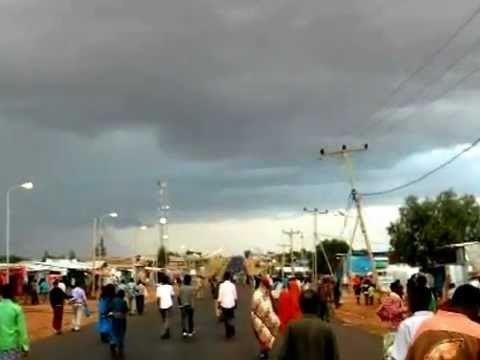Time zone EAT (UTC+3) Population 165,518 (2007) | Elevation 1,609 m | |
 | ||
Kebri Beyah (Somali: Qabribayax) is one of the Cities of Ethiopias in the Somali Region of Ethiopia. Part of the Kebri Beyah is bordered on the south by the Degehabur Zone, on the southwest by the Fiq Zone, on the northwest by Gursum, on the north by Jijiga and Awbere, on the northeast by Somalia, and on the east by Harshin. The City administrative center is Kebri Beyah;.
Contents
Map of Kebri Beyah, Ethiopia
The average elevation in this woreda is 1530 meters above sea level. The only perennial rivers in Kebri Beyah are the Fafen and the Jerer. As of 2008, Kebri Beyah has 55 kilometers of asphalt road, 48 of all-weather gravel road and 2642 kilometers of community roads; about 13.1% of the total population has access to drinking water.
The Ethiopian De-mining Office reported in November 2008 that it had cleared land mines planted in Kebri Beyah as part of the four million square meters of land the office had cleared in the Somali Region.
Demographics
Based on the 2007 Census conducted by the Central Statistical Agency of Ethiopia (CSA), this woreda has a total population of 165,518, of whom 89,703 are men and 75,815 women. While 25,493 or 15.4% are urban inhabitants, a further 19,806 or 11.97% are pastoralists. 98.77% of the population said they were Muslim.
There are 16,353 refugees from Somalia living at Kebri Beyah refugee camp.
The 1997 national census reported a total population for this woreda of 162,474, of whom 85,974 were men and 76,500 women; 23,725 or 14.6% of its population were urban dwellers. The largest ethnic group reported in Kebri Beyah was the Somali 160,785 (99.0%).
Agriculture
A sample enumeration performed by the CSA in 2001 interviewed 17,209 farmers in this woreda, who held an average of 1.15 hectares of land. Of the 19.8 square kilometers of private land surveyed, 75.11% was under cultivation, 11.21% pasture, 12.4% fallow, and 1.29% was devoted to other uses; the area in woodland is missing. For the land surveyed in this woreda, 61.29% was planted in cereals like teff, sorghum and maize, and 0.53% in pulses; the area planted in root crops and vegetables is missing. Permanent crops included 2539 hectares planted in khat, and 41.84 in fruit trees. 88.59% of the farmers both raised crops and livestock, while 4.29% only grew crops and 7.11% only raised livestock. Land tenure in this woreda was distributed amongst 98.02% owning their land, 0.94% renting, and the remaining 1.04% holding their land under other forms of tenure.
